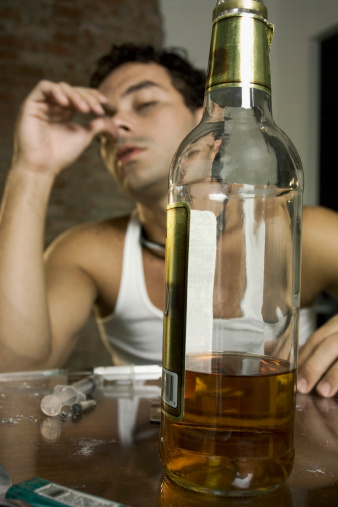In December of 2013, the White House held its first-ever summit on drug policy reform, with speakers discussing the need to change the language we use in reference to addiction. Dr. John Kelly, of both Harvard and the new Recovery Research Institute at Massachusetts General Hospital, addressed the group; including current federal drug czar Gil Kerlikowske, speaking at length about how problematic the stigma surrounding people with substance abuse issues has become.
Kelly openly decried the language still in use from the war on drugs, saying that using terms like “abuse†and “abusers†places the blame solely on the shoulders of those suffering from substance use disorders, and that kind of victimizing rhetoric is detrimental to both our criminal justice and public health systems.
“We don\’t refer to someone who has anorexia or bulimia as having a ‘food abuse\’ problem. We say they have an eating disorder. So why do we refer to someone who is addicted to alcohol or pain pills as having a ‘substance abuse\’ problem?†Kelly asked during the summit.
No One Chooses to Be an Addict
Of all the things that a person says that they want to be when they grow up, no one has ever said they wanted to grow up to be addicted to drugs and/or alcohol. Yet over 23 million Americans face this struggle every day, along with the misconception that they are somehow morally flawed or lacking mental resolve and willpower.
they are somehow morally flawed or lacking mental resolve and willpower.
Those who think drug addiction or alcoholism come down to decision making would be wise to review the volumes of research indicating otherwise. Multiple studies have shown that many addicts were genetically predisposed to addiction, and the disease of addiction was waiting to come to life at the first onset of substance abuse.[1]
There are multiple factors that lead a person down the path of addiction. Family history, social environment, traumatic experiences and mental health disorders are all precursors of drug and alcohol addiction. The Substance Abuse and Mental Health Administration estimates there are nearly 9 million people with co-occurring disorders, meaning they suffer from a psychological disease as well as addiction simultaneously. Of those, only seven percent receive treatment for both conditions, and more than half receive no treatment at all.[2]
Many people suffering from diagnosed depression, anxiety, anger-management issues, posttraumatic stress syndrome, bipolar disorder and other mental illnesses abuse drugs and alcohol as a means of self-medication. They seek to drown out their destructive, burdensome and painful emotions and thoughts with substance abuse.
Self-Medication or Self-Gratification?
Clearly, there are people who take drugs and abuse alcohol to experience the euphoric feelings, the rush and the high from substances. But there are also those who use and abuse substances to help them cope with troubling mental disorders. Distinguishing the difference is a challenge.
For as many diagnosed psychological illnesses there are in the nation, there are likely just as many undiagnosed cases. This means that millions of individuals are potentially dealing with symptoms of extreme depression, anxiety and other mental illnesses without any form of treatment and often without any knowledge that something is clinically wrong.[3]
The policy of incarcerating drug users instead of rehabilitating them has not helped reduce the problem of drug addiction; it has only overpopulated American jails to the point where the U.S. now houses a quarter of the world\’s prison population, despite only having five percent of the population.
Mentally ill people who abuse substances are less likely to achieve sustained sobriety and more likely to develop a physical dependence, according to the National Alliance on Mental Illness (NAMI).[4] So what begins as emotional avoidance or an individual attempting to drown out traumatic memories or symptoms of psychological disorders can easily end in a life-destroying addiction.
The Journey from Chronic Pain to Addiction
 America\’s greatest epidemic involves chronic pain and prescription opioids. More than 100 million Americans are living with debilitating chronic pain, and this has led to over-prescription of powerful pain medications.[5] Since 1997, the number of Americans seeking treatment for opioid addiction has increased by 900 percent.[6] This is an obvious problem on several different levels.
America\’s greatest epidemic involves chronic pain and prescription opioids. More than 100 million Americans are living with debilitating chronic pain, and this has led to over-prescription of powerful pain medications.[5] Since 1997, the number of Americans seeking treatment for opioid addiction has increased by 900 percent.[6] This is an obvious problem on several different levels.
First there is the issue of the problematic dependence created by long-term use of opioids. The immediacy and availability of prescription drugs make them an easy remedy for pain, but they do not actually address the source and must be taken regularly for people to live pain free. As a person continues to rely on opioids, their tolerance increases; as their tolerance increases, they need to take more drugs to alleviate pain; as this continues, a person is more and more likely to develop an addiction. This is the potentially deadly cycle of chronic pain and opioid use.
Another problem with the prevalence of opioid prescription and abuse is the access it gives to people who want to take the drugs for nonmedical reasons. Prescription and over the counter drugs are the second most abused drugs by Americans who are 14 or older.[7] Using prescription drugs to get high as opposed to getting well, makes users vulnerable to excessive abuse and potential overdoses.
There\’s also the issue of opioid use leading to heroin abuse and addiction. While the government has struggled over the last 10 years to get the prescription drug problem under control, heroin addiction has slowly become a public health crisis. As prescription opioids have become policed more closely, people have turned to heroin as a cheaper, more available and often more potent option.
A Shift in The War on Drugs
Nationwide addiction scares and the prevalence of crack, cocaine and heroin prompted the war on drugs, which officially began under President Richard Nixon in the 1970\’s. The policy of incarcerating drug users instead of rehabilitating them has not helped reduce the problem of drug addiction; it has only overpopulated American jails to the point where the U.S. now houses a quarter of the world\’s prison population, despite only having five percent of the population.[8]
Prisons have essentially become the largest mental healthcare system in the nation. Thirty-one percent of female and 14 percent of male inmates suffer from a serious mental illness. Fifty-six percent of state prisoners and 45 percent of federal prisoners had a recent history of mental health problems.[9]
The White House summit is one of many signs that the national philosophy on drugs is shifting to one that offers treatment rather than punishment. Behavioral Health of the Palm Beaches openly applauds this summit and the discussions held there, and hopes that they will lead to reformed policy more in line with modern addiction medicine.



